
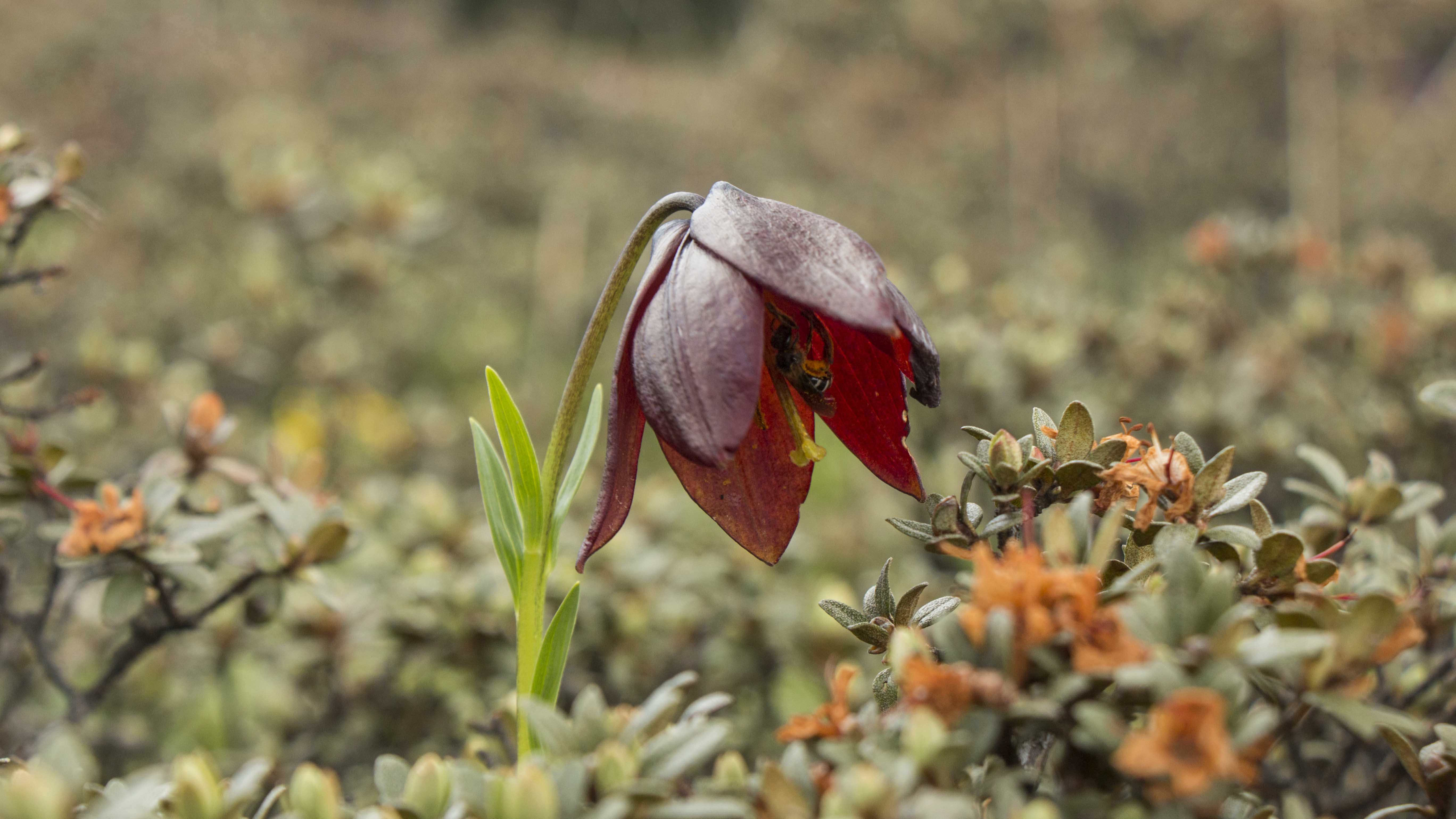
The bell-shaped Fritillaria unibracteata growing on the mountain slope. /CGTN Photo
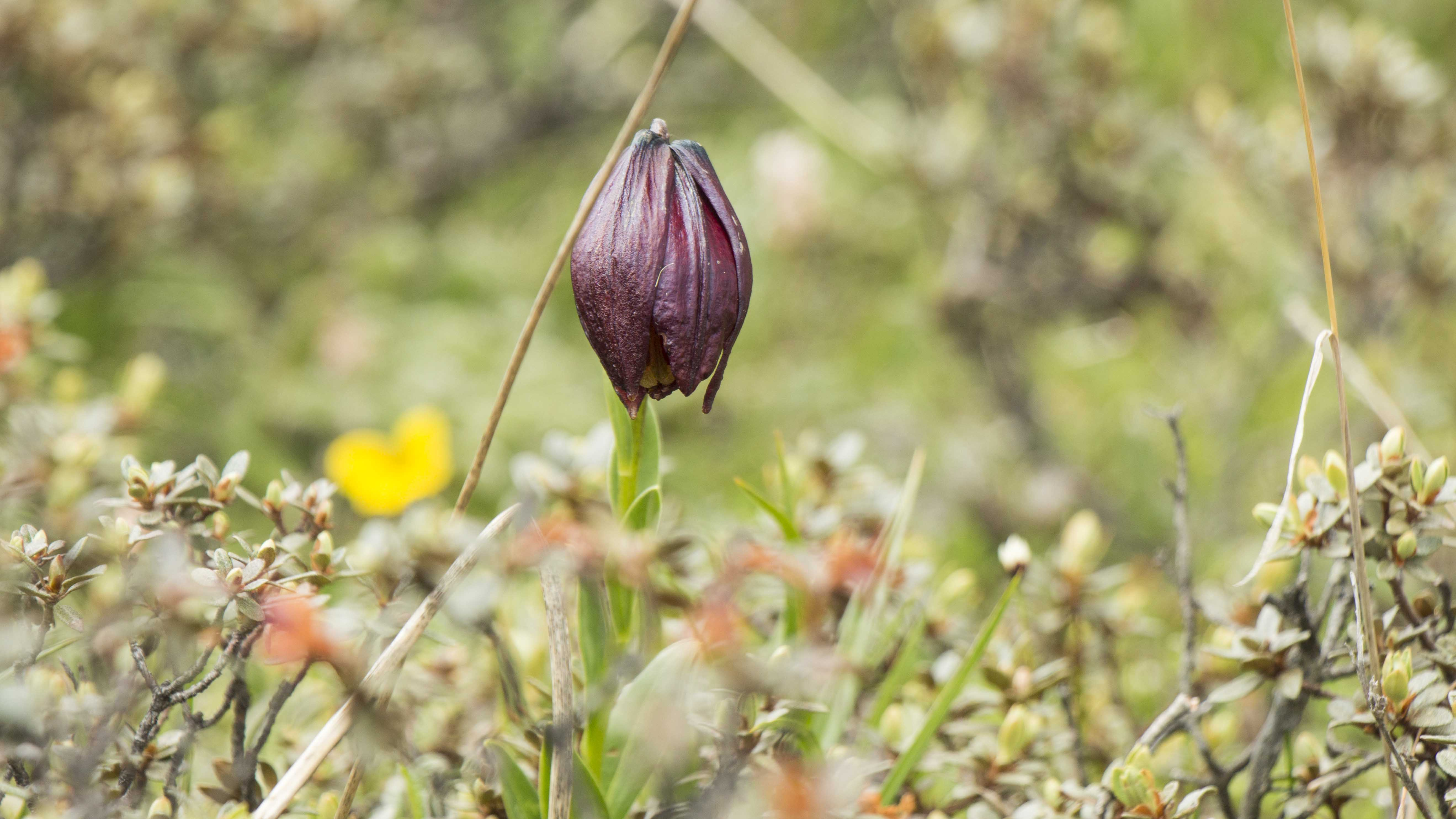
The bell-shaped Fritillaria unibracteata growing on the mountain slope. /CGTN Photo
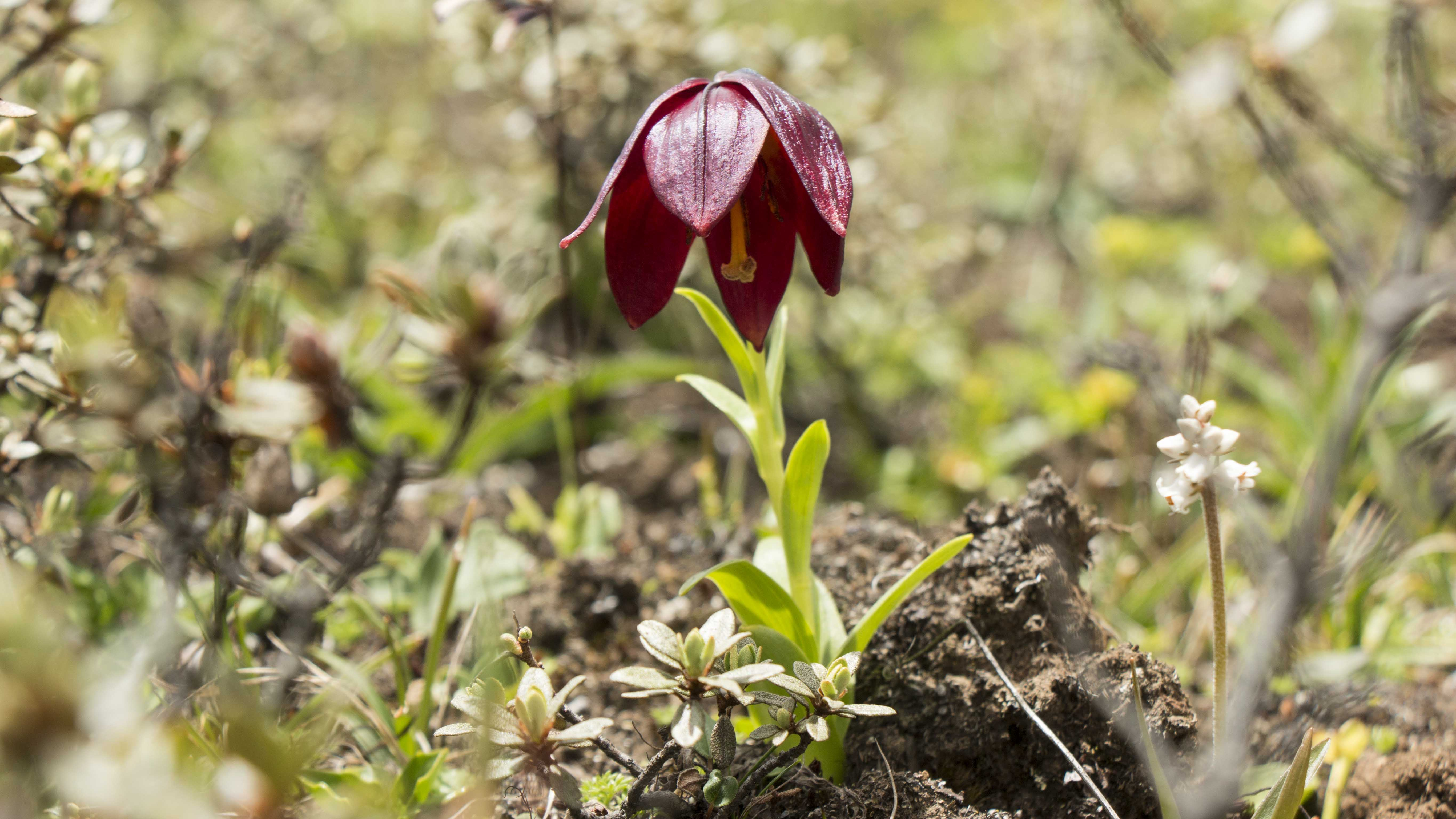
The bell-shaped Fritillaria unibracteata growing on the mountain slope. /CGTN Photo
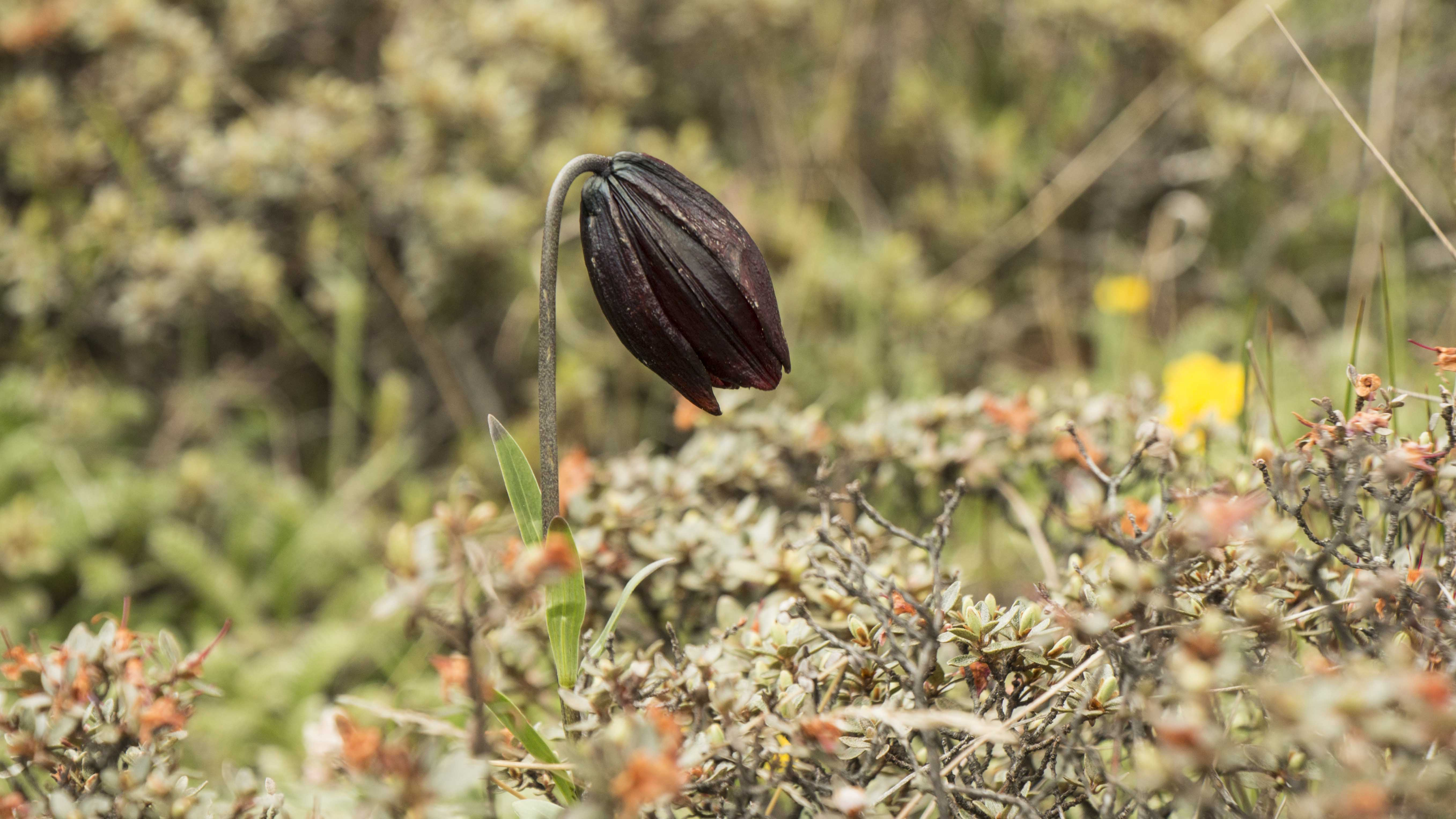
The bell-shaped Fritillaria unibracteata growing on the mountain slope. /CGTN Photo
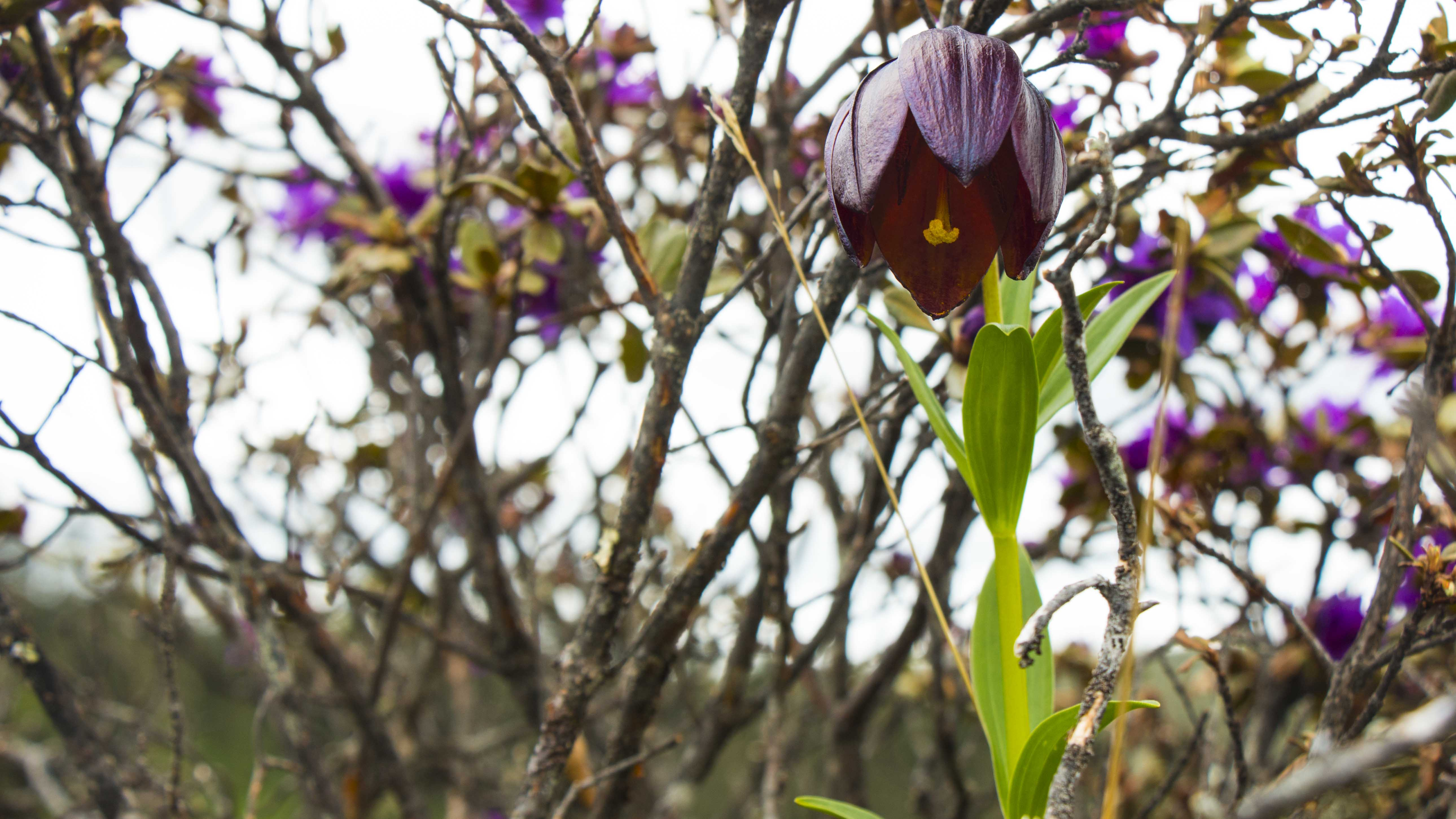
The bell-shaped Fritillaria unibracteata growing on the mountain slope. /CGTN Photo
On mountainous areas over 3,000 meters above sea level, short shrubs and bushes provide a good view for all plants. Hence, a dark purple flower hanging on a green stem stands out.
It is Fritillaria unibracteata, a valuable and traditional Chinese medicinal plant which belongs to the Liliaceae family. It is endemic to alpine areas in Gansu, Qinghai, Sichuan Provinces in China. The bulb is not only eatable, but can provide treatment for cough, phlegm, and fever.
It takes four years for a Fritillaria unibracteata to grow and mature. This plant has become an endangered species in China, according to the study "Organ culture of a precious Chinese medicinal plant – Fritillaria unibracteata" by S. L. Gao and his colleagues. Fortunately, cultivated plants can meet market demand and save this species from extinction in the wild.
China's Flora Tour
From the wetlands along the coast to the dense rainforests hidden in the southwest of China, all boast an array of plant species. In this series, we will go on a tour to learn about some of the most representative flora in different provinces and see how they live in harmony with the local geography and climate.
(Cover image credits to Xing Fangyu, designed by Yu Peng.)
(If you want to contribute and have specific expertise, please contact us at nature@cgtn.com)

Copyright © 2018 CGTN. Beijing ICP prepared NO.16065310-3
Copyright © 2018 CGTN. Beijing ICP prepared NO.16065310-3